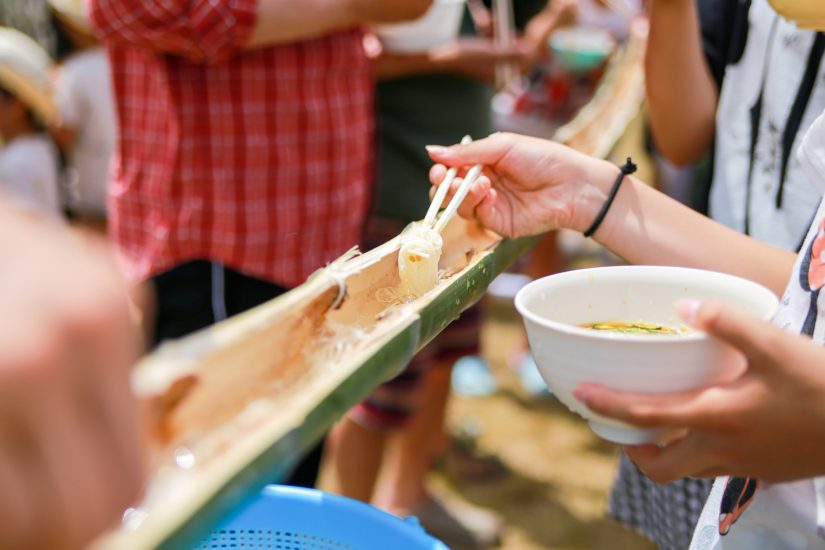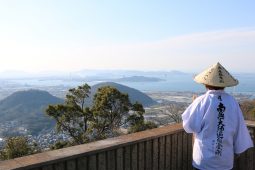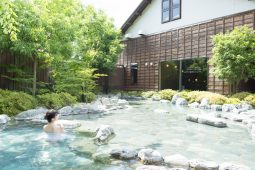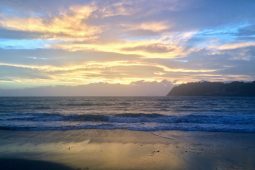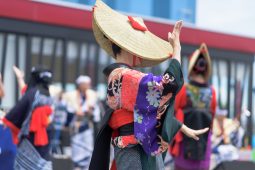Although around 67% of Japan is covered in mountains and it has a smaller land area than California, this archipelago of over 6,800 islands runs from north to south for 3,000km between latitudes 20° and 46°N and longitudes 123° and 154°.
That makes for a remarkable diversity in climate and landscape, which in turn is great for you – the newly-arrived foreign worker who is probably desperate to travel and see what the Land of the Rising Sun has to offer!
Only 13% of Japan is inhabitable flatland, and with 70% of its huge population crammed into the plains and valleys between Tokyo and Northern Kyushu, Japanese people in less crowded parts have become adept at making the most of their geology to provide visitors with unique and refreshing experiences.
Once such refreshing experience, and I mean that quite literally, is in Kagoshima where the sweltering summer heat regularly surpasses the temperatures in tropical, south-east Asian countries, particularly in August. Added to the hot weather, you have Sakurajima, Japan’s largest active volcano located in view of Kagoshima City which regularly douses the streets with a layer of ash.
Moreover, in beautiful Ibusuki they’ve been turning up the thermostat even higher for a long time by offering sand baths known as tsuna (sand) buro (baths). After a walk or drive in the 38°C heat of a humid Kagoshima summer, what could be better than to be buried up to your neck in roasting volcanic sand on the beach, with the ocean water only a stone’s throw away to torment you that little bit more! Apparently, it’s good for your skin and overall physical health…
“What about the ‘refreshing experience’ part?”, I hear you ask.
If you’ve ever been to Kamakura, you may have heard of a very cool (pun intended) method to serve thin soumen noodles called nagashi soumen! The word “nagashi” comes from the verb “nagasu” and refers to streaming or flowing water, for example, in a river. Soumen are exceptionally thin, white, wheat noodles popularly eaten chilled in the summer.
Traditionally, nagashi soumen, as served in Kamakura restaurants, is where noodles are released from the top of a bamboo chute in front of the diners as water streams down. The diners use their chopsticks to catch the noodles at the bottom of the slide and dip them in a cold, fish/kelp stock and soy-based dipping broth known as tsuyu.
In the Tosenkyo Gorge area of Ibusuki, Kagoshima, locals have invented a unique style of Nagashi Soumen by taking advantage of the region’s natural features. The seating areas in these restaurants are typically outdoors and they make splendid use of the 100,000 tons of spring water, which gushes daily from the gorge, with replica rivers and ponds within the grounds providing a home for the carp and trout destined to end up on diners’ plates.
In a covered outside seating area, a simple but unique, patented machine pumps the 13°C natural spring water so that it flows round and round in the center of your table, creating a soothing, cooling micro-climate in the immediate vicinity despite the broiling heat of the air outside.
This time, rather than waiting for a server to release your portion of noodles from the top of a slide for you to catch them, you place the noodles into the whirling, ice-cold water and everyone sitting around the table places their chopsticks upright into the fast flowing water and lets the noodles collect around them. Then, all you have to do is whip them out and dunk them in your tsuyu soup!
Local communities in Ibusuki have been working to preserve the purity of the Tosenkyo Gorge landscape and resources since the Meiji era (1868 – 1912) and their more recent efforts were rewarded in 2008 when the area was designated as one of Japan’s 100 best spring water sources.
Therefore, combined with the wonderfully presented whole carp sashimi and other dishes, this makes for one of the most refreshing summer dining experiences in the whole of Japan, but if you’re not keen on sampling the beautiful, sweet flesh of a still-twitching carp or trout, then just visiting for the noodles is a tremendous experience in itself.


